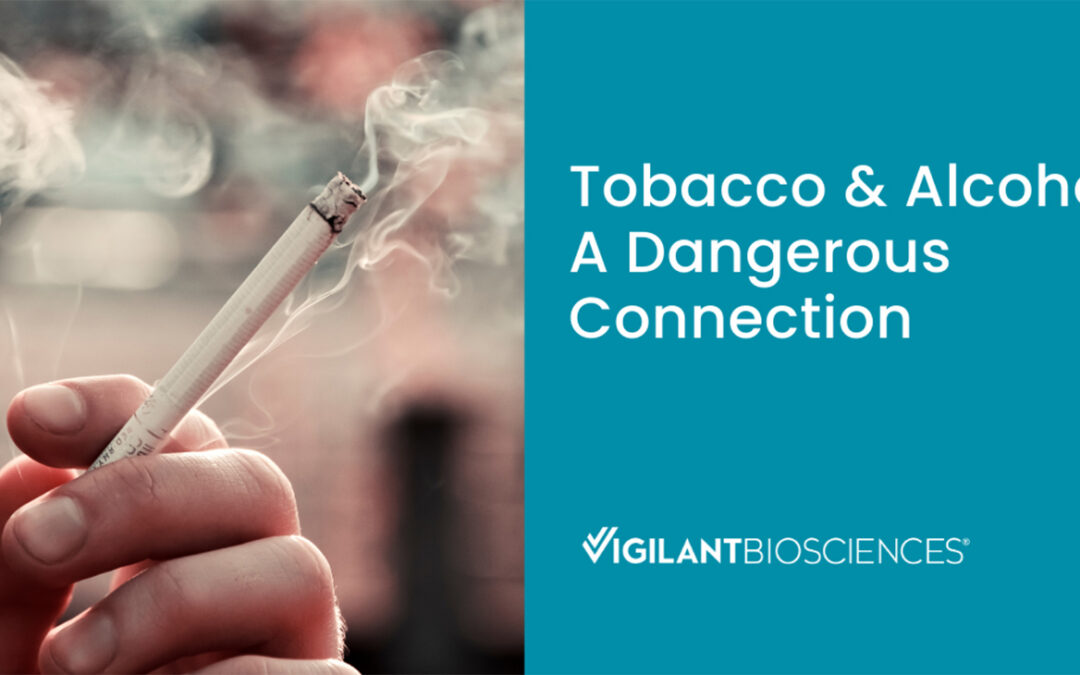Lifestyle factors play a major role in the development of oral cancer. Among the many clinical risk factors, smoking and alcohol top the list of behaviors that most directly increase a patient’s risk of oral cancer. Alone, smoking increases oral cancer risk by ten times,1 and heavy alcohol consumption increases risk by a factor of five.2
However, these lifestyle factors are not mutually exclusive. Patients with alcohol dependency are three times more likely to smoke, and patients who are dependent on tobacco are four times more likely to be addicted to alcohol.3 Moreover, alcohol consumption is directly correlated with smoking frequency, and high utilization of both substances exponentially increases the risk of developing adverse health effects like oral cancer.
Smoking and Alcohol: A Compounding Risk
While smoking and alcohol individually increase the likelihood of developing oral cancer, together they drive up to a 30-fold increase in a patient’s risk.4 This figure increases even further with additional clinical risk factors, most notably age (80% of cases occur in patients older than 55 years old) and gender (men are twice as likely to develop oral cancer).5
The exact reason for this synergistic effect is unknown, but certain mechanisms have been researched and proposed. Tobacco is well-understood to introduce carcinogens into the oral cavity that alter cellular mechanisms and damage DNA structure. Alcohol can break down the protective tissue covering the mucosa and increase cellular permeability to these molecules, in addition to accelerating the metabolism of tobacco tar into carcinogens. Used together, tobacco and alcohol facilitate the proper environment for cellular-level oral cavity changes that lead to cancer.
The Role of Proactive Screening
Early screening and detection are crucial for every oral cancer patient, but especially patients who use both tobacco and alcohol, as they are far more likely to develop the disease. Healthcare practitioners play a pivotal role in recognizing early-stage signs and symptoms and should be on high alert when evaluating patients who frequently smoke and drink.
The earlier oral cancer can be detected, the more effective and less invasive a patient’s treatment can be. Regular dental check-ups provide an ideal opportunity to assess and monitor patients for abnormal changes in their oral mucosa. This includes a thorough examination of the mouth, lips, tongue, and surrounding areas for symptoms, including:
- Red or white patches
- Persistent sores or lumps
- Unexplained bleeding
- Sore throat or difficulty swallowing
- Changes in voice or speech
- Poorly fitting dentures or other teeth problems
Discussing risk factors before cancer develops not only enables immediate intervention but also helps patients implement behavioral and lifestyle changes that promote oral health, potentially delaying an oral cancer diagnosis. If patients start to develop lesions, their providers can respond quickly and initiate treatment before extensive surgery and rehabilitation are needed.
Take the Next Step in Improving Oral Cancer Detection
Understanding a patient’s risk factor profile is the essential first step in achieving better oral cancer outcomes. The next step is accurate screening once lesions start to grow. The BeVigilant™ OraFusion™ System from Vigilant Biosciences® helps providers accelerate detection by analyzing clinical risk factors and identifying early-stage biomarkers found in saliva. The non-invasive test is performed at the point of care and provides a low, moderate, or elevated risk result in 15 minutes or less. The BeVigilant™ OraFusion™ System is pending FDA approval, but is already transforming outcomes and saving lives in Germany, Italy, and the UK.
Sources
1. Oral Cancer and Tobacco. (n.d.). Johns Hopkins Medicine. Retrieved October 18, 2023, from https://www.hopkinsmedicine.org/health/conditions-and-diseases/oral-cancer-and-tobacco
2. Bagnardi, V., Rota, M., Botteri, E., Tramacere, I., Islami, F., Fedirko, V., Scotti, L., Jenab, M., Turati, F., Pasquali, E., Pelucchi, C., Galeone, C., Bellocco, R., Negri, E., Corrao, G., Boffetta, P., La Vecchia, C. (2015). Alcohol consumption and site-specific cancer risk: a comprehensive dose-response meta-analysis. British Journal of Cancer 112(3), 580-593.
3. Greer, J.B., Thrower, E., & Yadav, D. (2015). Epidemiologic and Mechanistic Associations Between Smoking and Pancreatitis. Current Treatment Options in Gastroenterology 13(3), 332-346.
4. World Cancer Day: know the facts – tobacco and alcohol both cause cancer. (2021, February 3). World Health Organization. https://www.who.int/europe/news/item/03-02-2021-world-cancer-day-know-the-facts-tobacco-and-alcohol-both-cause-cancer
5. Key Statistics for Oral Cavity and Oropharyngeal Cancers. (2023, January 18). American Cancer Society. https://www.cancer.org/cancer/types/oral-cavity-and-oropharyngeal-cancer/about/key-statistics.html
